Showing Spotlights 897 - 904 of 2878 in category All (newest first):
 Many of the electronic devices we use in our daily life rely on liquid crystal display (LCD) technologies. LCDs get their name from the special liquid crystal solution that is contained between two thin glass plates inside the display. An electric field applied across the liquid crystal layer changes optical properties of the liquid crystals thus enabling their use in displays. A new paper reports several interesting size effects including monotonous and non-monotonous dependence of the total concentration of mobile ions in liquid crystals on the thickness of the cell and/or on the concentration of nanoparticles.
Many of the electronic devices we use in our daily life rely on liquid crystal display (LCD) technologies. LCDs get their name from the special liquid crystal solution that is contained between two thin glass plates inside the display. An electric field applied across the liquid crystal layer changes optical properties of the liquid crystals thus enabling their use in displays. A new paper reports several interesting size effects including monotonous and non-monotonous dependence of the total concentration of mobile ions in liquid crystals on the thickness of the cell and/or on the concentration of nanoparticles.
Jun 30th, 2017
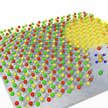 The ultimate challenge of nanotechnology is to control the structure of matter with atomic precision. The better we are at shaping and structuring material on a small scale, the more powerful technology we can dream of. Unfortunately, the atomic scale is entirely out of range for conventional patterning. Researchers now report that they have achieved nanoscale self-assembly within a two-dimensional layer. Dosing of ethylene and borazine near a hot iridium surface, leads for self-organising of a two-dimensional superlattice of graphene dots.
The ultimate challenge of nanotechnology is to control the structure of matter with atomic precision. The better we are at shaping and structuring material on a small scale, the more powerful technology we can dream of. Unfortunately, the atomic scale is entirely out of range for conventional patterning. Researchers now report that they have achieved nanoscale self-assembly within a two-dimensional layer. Dosing of ethylene and borazine near a hot iridium surface, leads for self-organising of a two-dimensional superlattice of graphene dots.
Jun 29th, 2017
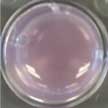 Ionizing radiation (e.g. X-rays) is widely used in the treatment of cancer, but can cause significant damage to healthy cells. The overarching goal of radiotherapy is to safely, accurately and efficiently deliver ionizing radiation in order to treat diseases, typically cancer. A novel sensor technology can help medical physicists and oncologists effectively plan fractionated radiotherapy in the clinic, reduce accidental overexposures, and reduce radiation-induced toxicity.
Ionizing radiation (e.g. X-rays) is widely used in the treatment of cancer, but can cause significant damage to healthy cells. The overarching goal of radiotherapy is to safely, accurately and efficiently deliver ionizing radiation in order to treat diseases, typically cancer. A novel sensor technology can help medical physicists and oncologists effectively plan fractionated radiotherapy in the clinic, reduce accidental overexposures, and reduce radiation-induced toxicity.
Jun 29th, 2017
 Three-dimensional (3D) printing, also known as additive manufacturing, is a fabrication method that creates structures from digital models. Unlike conventional fabrication methods, 3D printing processes are bottom-up fabrication methods which are based on the incremental addition of layers of materials. Recently, 3D-printing has also been shown to be advantageous to catalytic applications since a printing approach can achieve better control of the fine structure of the target material. It is expected that 3D printing fabrication will provide new solutions for preparing catalysts with new structures in a more economical and energy-efficient way.
Three-dimensional (3D) printing, also known as additive manufacturing, is a fabrication method that creates structures from digital models. Unlike conventional fabrication methods, 3D printing processes are bottom-up fabrication methods which are based on the incremental addition of layers of materials. Recently, 3D-printing has also been shown to be advantageous to catalytic applications since a printing approach can achieve better control of the fine structure of the target material. It is expected that 3D printing fabrication will provide new solutions for preparing catalysts with new structures in a more economical and energy-efficient way.
Jun 27th, 2017
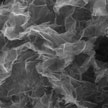 As two-dimensional (2D) materials gain more and more importance - thanks to their exotic electronic properties and abundant active sites - the development of high-yield, efficient, fast and low-cost synthesis methods to advance these materials from the laboratory to industry has become an urgent issue. Now, researchers have developed a general and rapid molten salts method that can synthesize various ion-intercalated 2D metal oxides and hydroxides, such as cation-intercalated manganese oxides, cation-intercalated tungsten oxides, and anion-intercalated metal hydroxides.
As two-dimensional (2D) materials gain more and more importance - thanks to their exotic electronic properties and abundant active sites - the development of high-yield, efficient, fast and low-cost synthesis methods to advance these materials from the laboratory to industry has become an urgent issue. Now, researchers have developed a general and rapid molten salts method that can synthesize various ion-intercalated 2D metal oxides and hydroxides, such as cation-intercalated manganese oxides, cation-intercalated tungsten oxides, and anion-intercalated metal hydroxides.
Jun 23rd, 2017
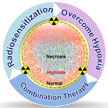 A look at the emerging roles of nanotechnology in the rapidly evolving domain of modern/future radiation therapy. In an effort to devise novel and more effective anticancer regimes, a rapidly growing community of researchers is applying the unique properties of nanomaterials to combat the unmet challenges posed by classical radiation therapy - which has become one of the most effective and frequently applied cancer therapies. However, despite a plethora of preclinical studies, nanoparticle mediated combination RT/phototherapy has not yet been translated in the clinic.
A look at the emerging roles of nanotechnology in the rapidly evolving domain of modern/future radiation therapy. In an effort to devise novel and more effective anticancer regimes, a rapidly growing community of researchers is applying the unique properties of nanomaterials to combat the unmet challenges posed by classical radiation therapy - which has become one of the most effective and frequently applied cancer therapies. However, despite a plethora of preclinical studies, nanoparticle mediated combination RT/phototherapy has not yet been translated in the clinic.
Jun 22nd, 2017
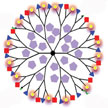 Dendrimers have emerged as a powerful class of nanomaterials in nanomedicine due to their unique structural features: globular, well-defined, highly branched and controllable nanostructures where the presence of several terminal groups can be functionalized with different ligands simulating the multivalency present in different biological systems. A recent review article identifies the currently existing dendritic systems and discusses their strengths and caveats in the context of attaining efficient therapeutic strategies for the treatment of neurological disorders.
Dendrimers have emerged as a powerful class of nanomaterials in nanomedicine due to their unique structural features: globular, well-defined, highly branched and controllable nanostructures where the presence of several terminal groups can be functionalized with different ligands simulating the multivalency present in different biological systems. A recent review article identifies the currently existing dendritic systems and discusses their strengths and caveats in the context of attaining efficient therapeutic strategies for the treatment of neurological disorders.
Jun 21st, 2017
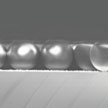 Sometimes nanoscale diamonds contain a specific type of impurity: a single nitrogen atom where a carbon atom should be, with an empty space right next to it, resulting from a second missing carbon atom. This nitrogen-vacancy (NV) impurity gives each nanodiamond special optical and electromagnetic properties. Nitrogen vacancy centers in nanodiamonds require a method to manipulate their electron spin orientations physically. Recent work demonstrates a general active NV system: Nanodiamond swimmers that self-propel.
Sometimes nanoscale diamonds contain a specific type of impurity: a single nitrogen atom where a carbon atom should be, with an empty space right next to it, resulting from a second missing carbon atom. This nitrogen-vacancy (NV) impurity gives each nanodiamond special optical and electromagnetic properties. Nitrogen vacancy centers in nanodiamonds require a method to manipulate their electron spin orientations physically. Recent work demonstrates a general active NV system: Nanodiamond swimmers that self-propel.
Jun 20th, 2017
 Many of the electronic devices we use in our daily life rely on liquid crystal display (LCD) technologies. LCDs get their name from the special liquid crystal solution that is contained between two thin glass plates inside the display. An electric field applied across the liquid crystal layer changes optical properties of the liquid crystals thus enabling their use in displays. A new paper reports several interesting size effects including monotonous and non-monotonous dependence of the total concentration of mobile ions in liquid crystals on the thickness of the cell and/or on the concentration of nanoparticles.
Many of the electronic devices we use in our daily life rely on liquid crystal display (LCD) technologies. LCDs get their name from the special liquid crystal solution that is contained between two thin glass plates inside the display. An electric field applied across the liquid crystal layer changes optical properties of the liquid crystals thus enabling their use in displays. A new paper reports several interesting size effects including monotonous and non-monotonous dependence of the total concentration of mobile ions in liquid crystals on the thickness of the cell and/or on the concentration of nanoparticles.
 Subscribe to our Nanotechnology Spotlight feed
Subscribe to our Nanotechnology Spotlight feed





